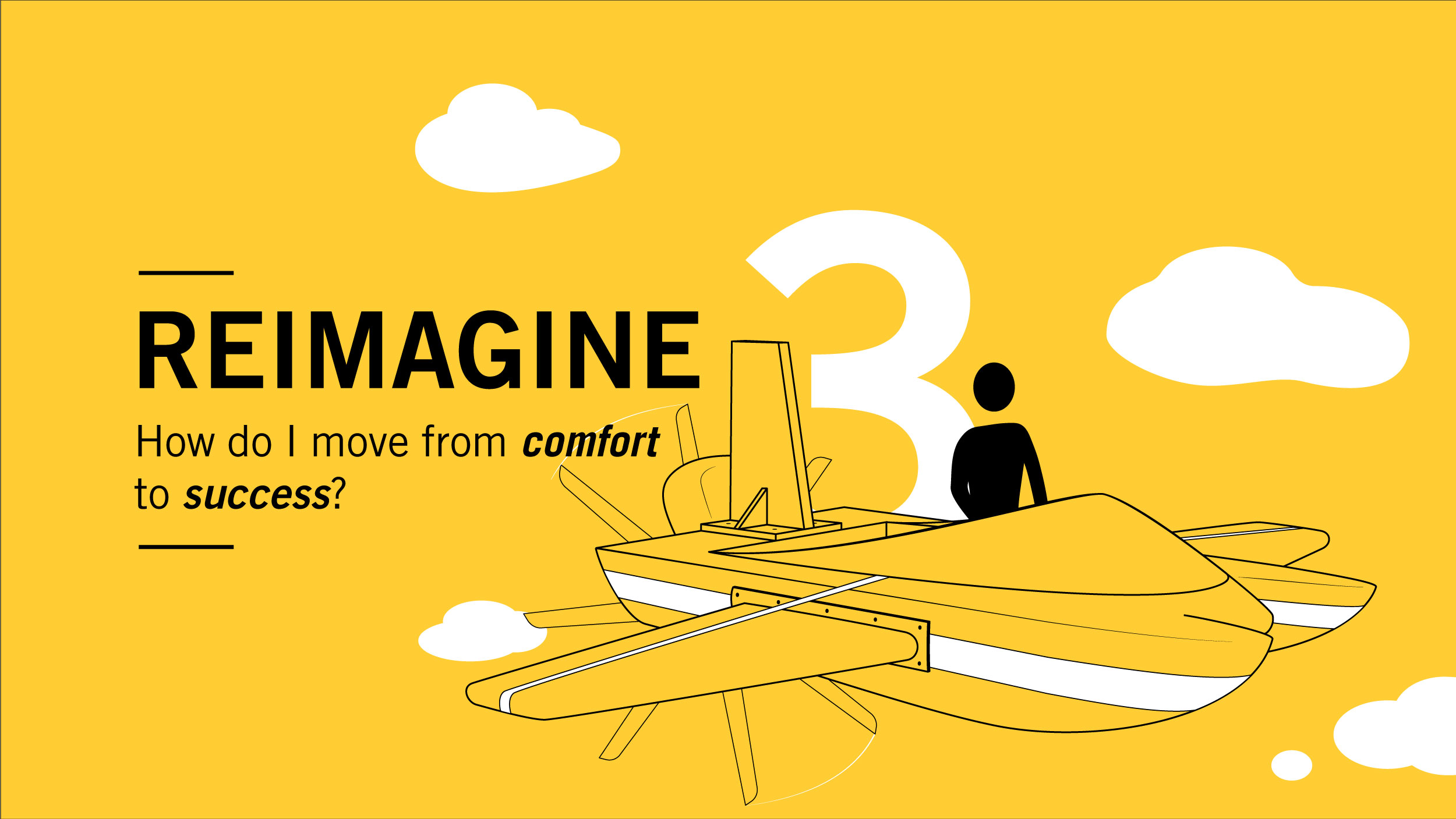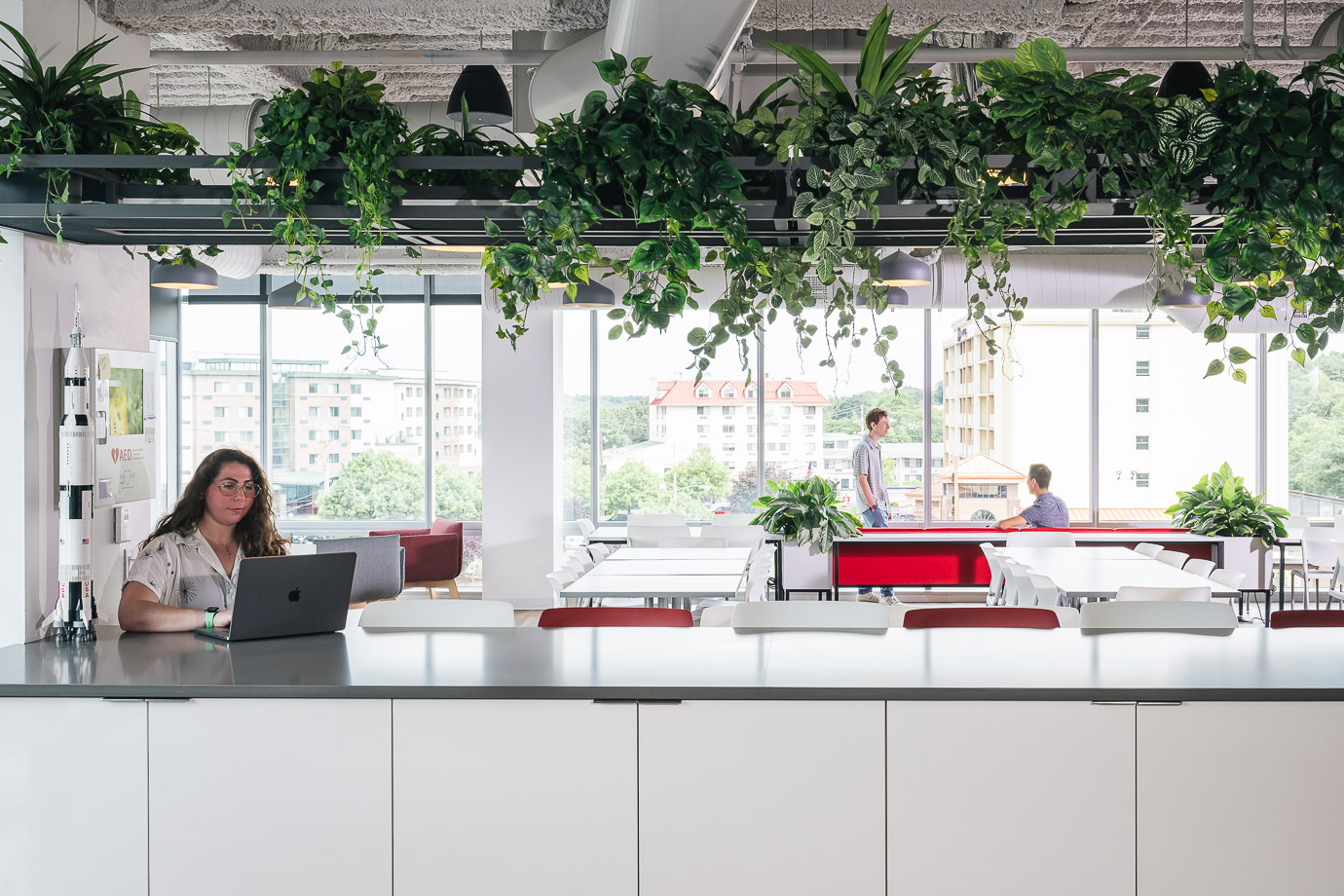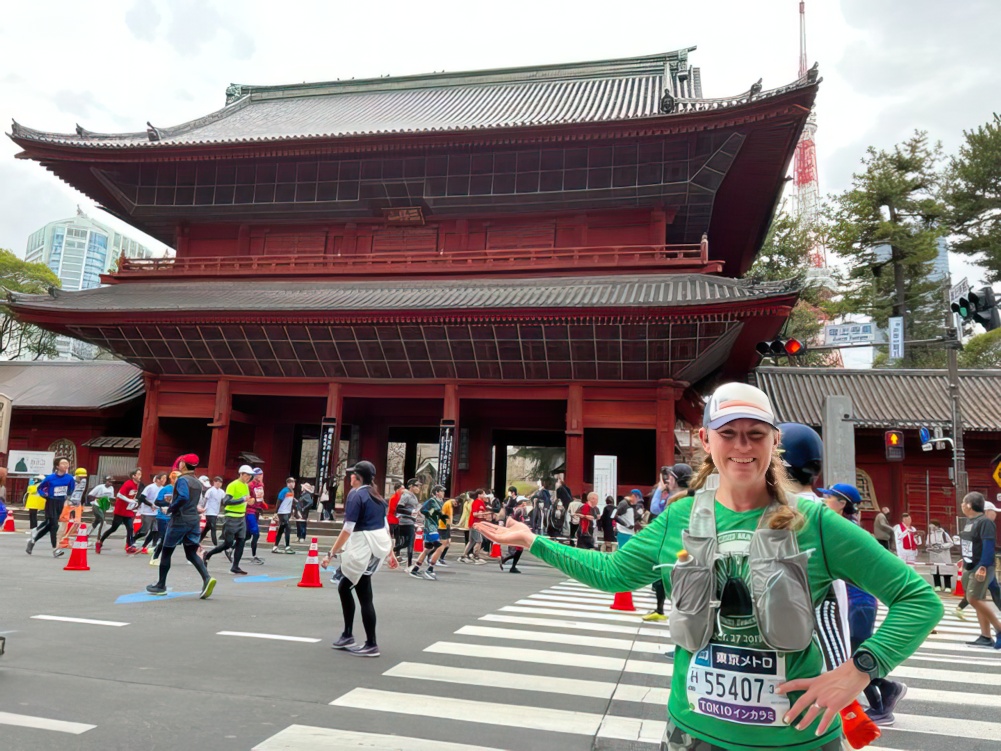For this third and final issue of our Post Pandemic Workplace series, we follow along as Leila Mitchell, LLM’s Founder and Creative Director, and Dorran Prescott, our senior architectural designer, discuss how we can reimagine the workplace after this pandemic. They don’t always agree, but it makes for good reading!
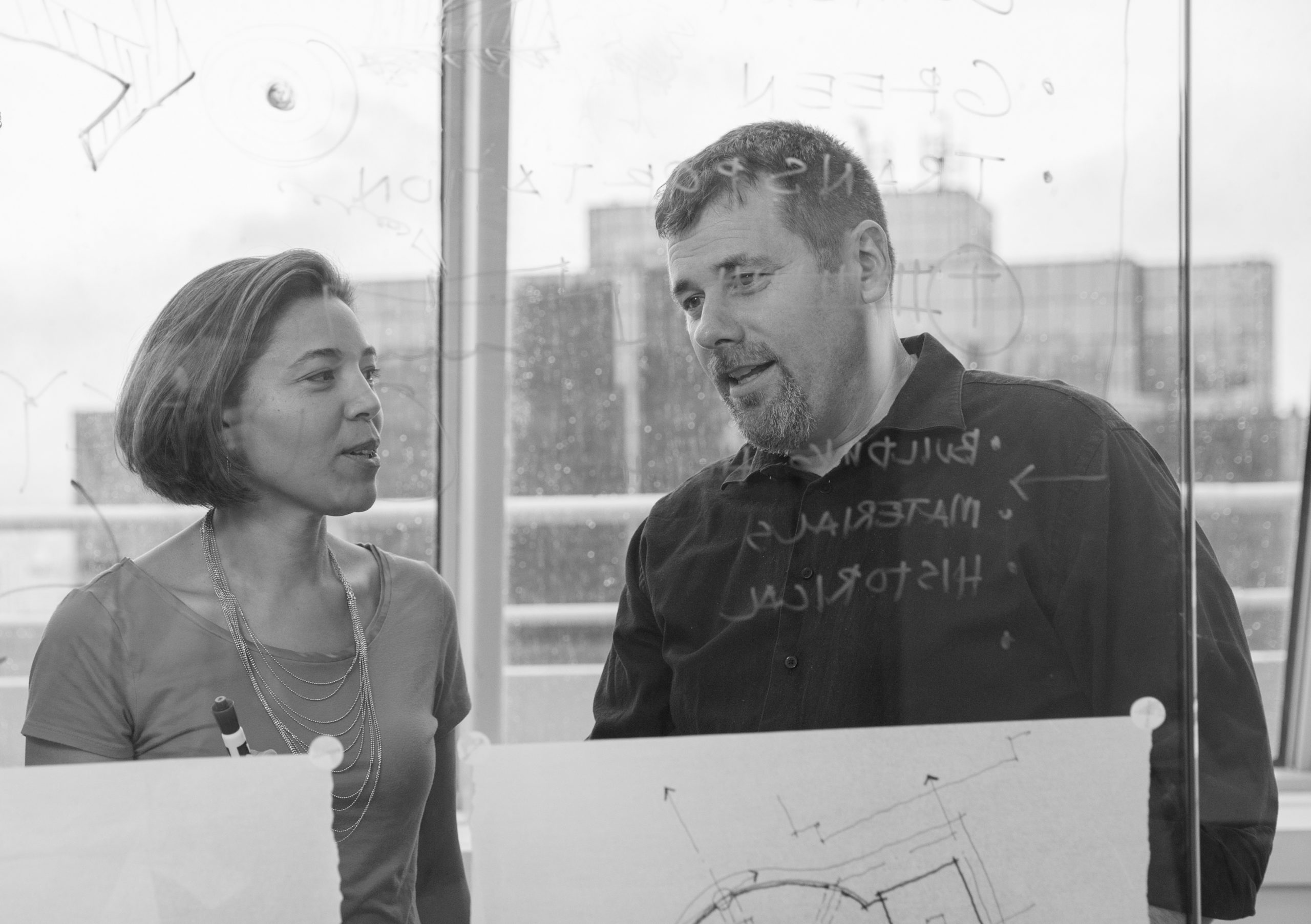
1. We’ve been living with this pandemic for five months now. What are your thoughts about the current work situation? Positives? Negatives?
Leila: We have been thrust into a societal experiment. What happens when we are forced to disrupt our normalcy, our comfort level, and stop “business as usual?” We recreate, redesign, and reimagine. As unfortunate as the circumstances are that led us to where we are today, I believe this moment is uncovering immense opportunity and potential for innovative change. From our personal to business lives, we are peeling away the heavy layers and finding the heartbeat of what makes us strong. For me, I’ve found small moments in just letting go. Working from home with three kids and a dog certainly puts things in perspective. Not every client meeting or class will be uninterrupted by a loss of WiFi, a crying kid, or the obnoxious grinding of the garbage disposal. But every dinner has conversation, games, and sometimes a little laughter. I realize all the things I can do without the formality of it all.
But I miss my friends. I miss hugging my mom and dad. I miss the LLM Design family lunches we had every day. I come from a big Jamaican family where everyone is your cousin or your Auntie. I grew up in Virginia where you have a full on conversation with the grocery store clerk about their sick dog all while touching their hand. I love to hug. The lack of physical connection lately has been killing me. I won’t of course go so far as to say that we all need this kind of physical touch to connect, but we do all want to feel like we have something in common with another—and that we are not experiencing all of this alone. These commonalities create community. Every workplace is a type of community, and we need to recover this missing element.
Dorran: I couldn’t agree more that the workplace community is sorely missed. I tend to think of it, though, more in terms of how this loss has crimped the creative process and sharing of ideas, stealing vital support structures in job environments that rely on others’ experience or creativity to enhance work results.
That said, I of course can also see the positive side–it is hard not to mention that the pandemic has brought perspective to the importance of family, friends, faith, and the health + safety of fellow peoplekind. I believe the benefits have allowed us to prioritize and examine how we can accomplish corporate and personal goals, proving that society can adapt to a new landscape. The realization that work can be produced with high-level results remotely and can be maintained en masse has much to do with technology. I have to admit that I was expecting remote internet crawls and lengthy time spans of sending/receiving emails that would force us to fall back on the USPS for more reliable service. Thankfully, aside from some minor hiccups, connectivity has triumphed.
With the GDP expected to drop eleven percent (the most recent comparison is 8.4 in 2008 and the worst since the Great Depression) and many disputing what the recovery will look like, unemployment numbers of 4.8 million tell a sad story of lives in upheaval. Uncertainty is a tough pill to swallow for any growth, but with slowed spread of the virus and a potential vaccine, the turnaround road sign we all hope for just might be in the rear view mirror soon.
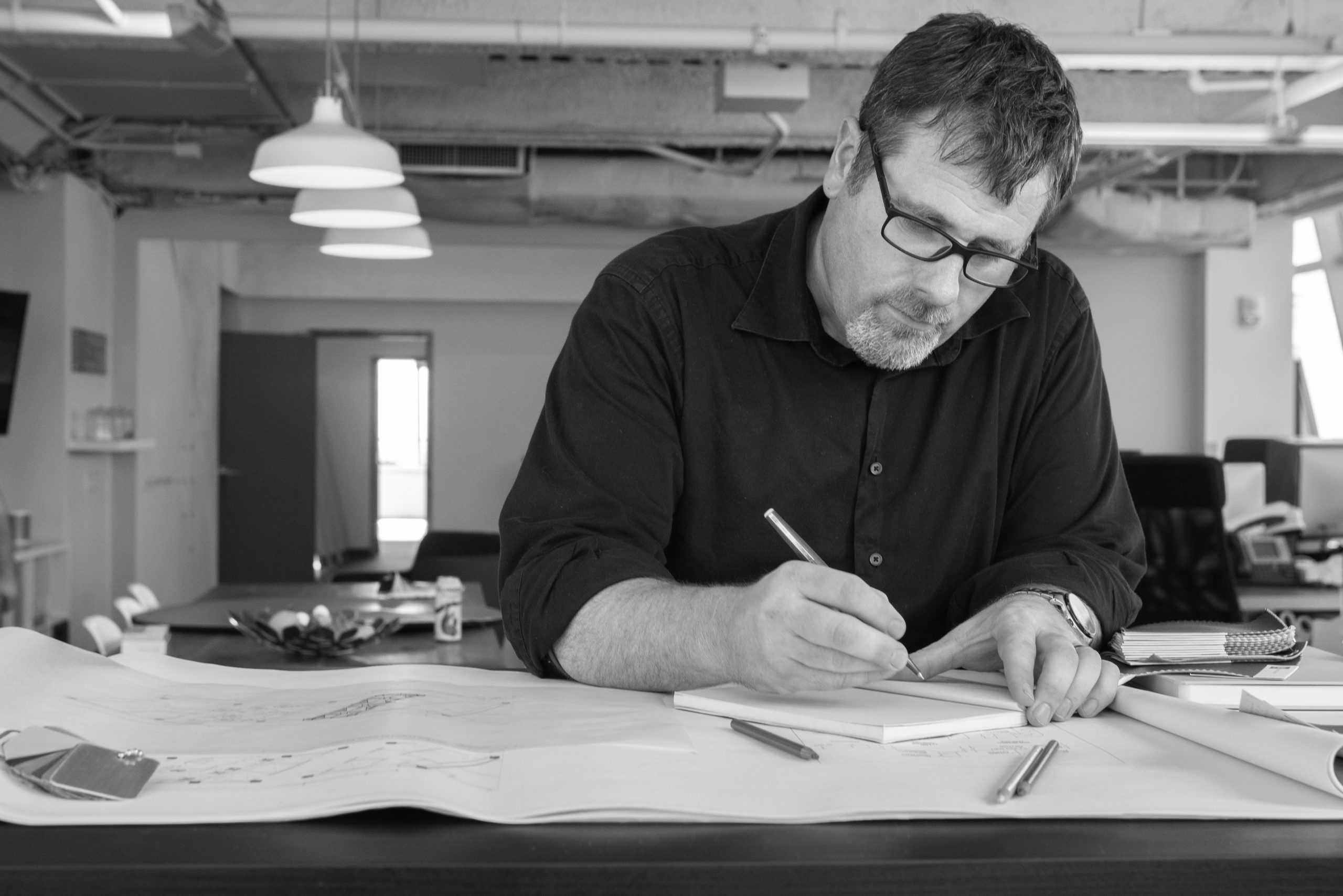
2. Are you seeing any opportunities arising from our current situation?
Dorran: I think discussions such as this—on quality of work-life balance and how our workplaces can react to straining times—have brought up opportunities for all of us to spread our wings. How to multitask and manage (relationships, children, work and sanity) being cooped up in places we call home and how, in the face of death, many ventured to hospitals and other essential posts to help others. These serve as reminders of how resilient we are as people.
I also believe that this pandemic will prepare us for future pandemic or industrial accident struggles. I hope that we once again don’t have a short-term memory, that the desire to be communal won’t push the realities out of sight and mind, pulling us to a return to our “normal” lives. Case in point: the Spanish Flu struck at the close of WW1 in 1918, killing 675,000 people in the United States alone, with no widespread vaccine available until 1940—and yet we had to be reminded that it was actually in our history textbooks because of Covid-19. (Note: most believe a Coronavirus vaccine is on the horizon as early as the fall or early spring.) The more recent 9-11 tragedy which had the entire nation holding hands in solidarity is a forgotten conclusion in the wake of the current political and racial unrest. The results from this pandemic, I hope, will at least incentivize preparedness. That we will create not only a home stockpile of emergency cleaning materials and a methodical cleanliness, but also develop a visionary plan of how to help others who might be more susceptible to the potential dangers.
And it’s here that I make my way back to the workplace… All of this translates to workplaces that mirror the same preparedness, but also propel forward advances in mechanical systems that can better filter disease and result in reactionary plans that outline how to keep people safe with off-the-shelf products, that in turn can ramp up production… Please remind me to buy stock in Purell and companies that manufacture plexi-glass.
Leila: I love the word “opportunity.” I’m the type of person that when faced with a wall, I find the protruding bricks and hidden openings to begin the climb over that wall. I think you are right, Dorran, that through tragedies we become better informed and more prepared for the next time. For instance, we are paying more attention to the health and safety of our workplaces and prioritizing budgets to make them cleaner. Cue opportunities for new designs in HVAC, lighting, layout, furniture, materials, and operations. Opportunities for a new type of business model that we introduced in our “Recover” issue was the Service Layer. This team can help any business with functionalities that were once shared or self-service, but now need to be serviced—such as the coffee station or work lunches. Other supplementary layers can be added such as the IT, sanitization, or health and wellness teams. But this is all very tactical. I think the halting of our forward motion allows us to evaluate the track that we are on and calls for a more strategic approach to doing business. What can we learn from working remotely? How are we winning? How are we losing? Can we find the soul of our business and run with a cleaner, healthier, more efficient engine? This is the real opportunity.
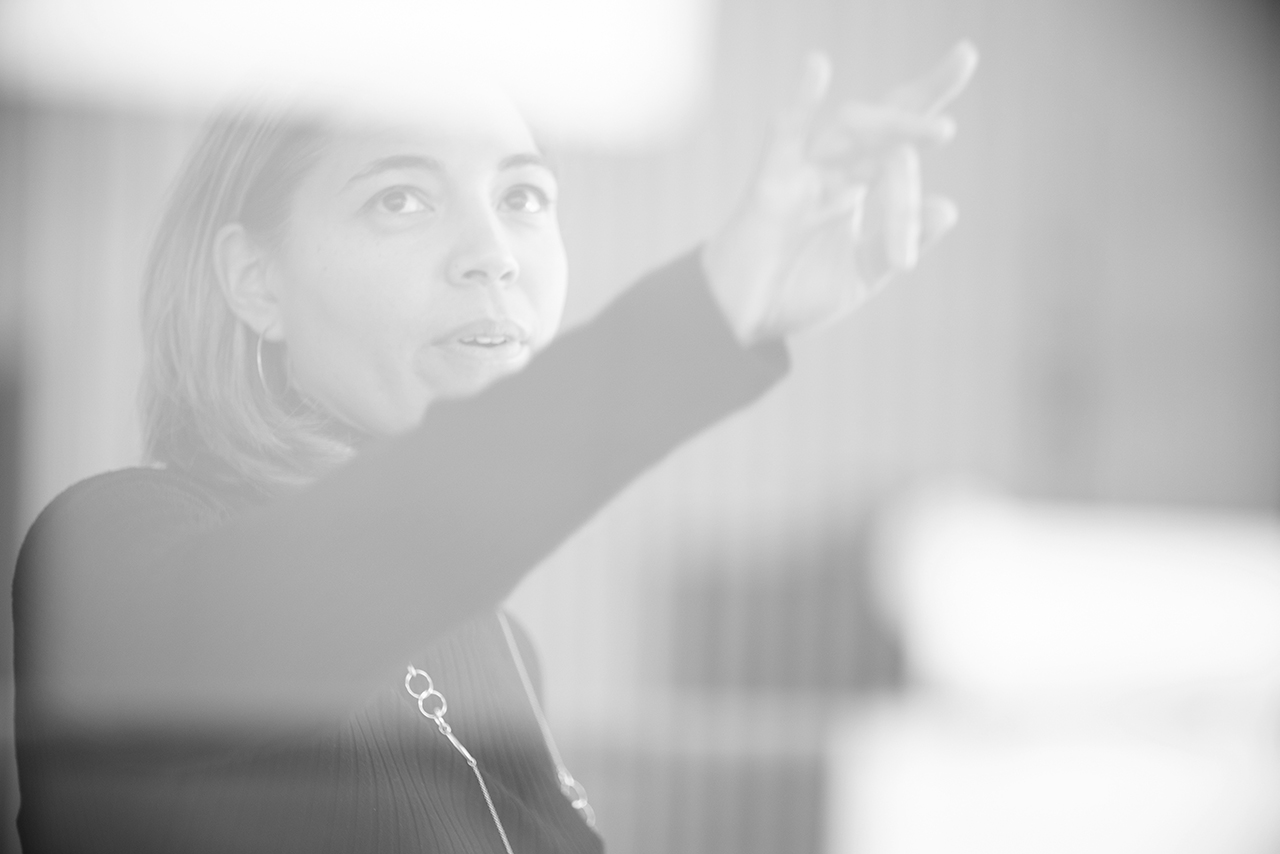
3. How do we move from the Pandemic office to Post-pandemic office to normalcy?
Leila: We offer some great pointers in the Respond and Recover issues to bring your business from reactive to proactive. From 100% remote to entering back into the building. This still just moves us from Pandemic to Post-pandemic office, though. What will the “new normal” look like? First, we need to figure out how to navigate through this opportunity and develop a roadmap for change. There are three avenues of study I suggest to critically evaluate your business and what it might look like in the future.
Look to the academic village. For years the academic and professional practice communities have fed each other’s development. Classrooms strive to become more like working clinics, while offices are designed more like the college campus. Universities are giving more choice to students, and employers are following suit as they recruit talent. Technology is linking global offices and teams, and college classrooms are using online tools to expand interdisciplinary studies. Current students (upcoming generations of workers) are becoming tremendously literate with tech connecting, mobile flexibility, and personal autonomy. Campuses are adapting now with hybrid teaching models, asynchronous and synchronous classes, and finding new ways to use old spaces. As an example, Massachusetts College of Art and Design is turning their urban campus into a Resource Center, where spaces left empty from remote learning can be flex spaces used by students to study or work.
Understanding and utilizing Work Modes. As a teacher, I need to recognize that not all students learn and retain information the same way. Teachers respond by delivering the curriculum in a variety of modes: hands-on, verbal, visual, recitations, independent and group work. When designing the office environment, we also need to understand the various user types and activities within the space. We have what are called “work modes” These work modes are not assigned to specific individuals for the entire day, but actually a single worker can be in a variety of modes throughout the day, week, or life of a project. The work and activity modes we have identified in some of our client environments are: collaboration (external and internal), one-on-one, individual work, individual deep focus, external social, internal social, and individual well-being. When we design spaces for our clients, we think about the space archetypes where these modes can exist and cohabitate—from bullpens and open desks to conference rooms and town halls. We organize these into a plan that fits within the existing square footage and integrate supplemental spaces and circulation. Now let’s use these same modes to set up a matrix with the new knowledge we’ve gained from our current social and work experiment. Think beyond the four walls of the office and ask the questions: When do we work in these modes? What do we need to be effective in these modes? What are the distractions that pull us out of these modes and how do we minimize these? Run scenarios through the matrix that apply to your business: by department, by team, by week, by day. Strategize a workflow that allows flexibility of space types and office hours to allow an employee to get the most out of each work mode. Reorganize your operations and workspace to meet these needs. For instance, when I’m working in individual deep focus, do I really need to be at my desk, in the office, between the hours of 9-to-5? No, I’d rather be in my yoga pants at home, listening to music, and still with the freedom to meet my daughter’s bus after school. I’ll get more deep focus work done, and may not need a designated desk space at the office.
We are finding that the collaboration and social activities are stretched thin on Zoom or Mural boards. These tools help us tech-connect, but these activities need more dimensionality, more human interaction. The in-office/studio spaces need to still be available for those times of the project, week, or day that are active in these modes.
Employee productivity through Engagement: One of my favorite authors, Daniel Pink, writes about what motivates us in his 2009 book Drive. He argues, with supporting studies, that businesses are missing the point when motivating their employees. He promotes the elements of Autonomy, Mastery, and Purpose to reorganize how we think about our employees for a better business model. I love how he suggests that businesses need a “new operating system.” That’s exactly what I am proposing we strategize toward as we use this time to evaluate our businesses. Using a human-centric design to remodel our business, our formula allows for self-direction, flexibility, improvement, and dedication. All things that when activated will generate a full-throttled business engine.
For more on Daniel Pink visit his website. Besides Drive, one of his earlier books, A Whole New Mind, is also a must read.
Dorran: My thoughts on this one are a lot more about the physical space—what it looks like, what it feels like, how it’s built. Pandemic office scaries would have you believe that collaborative gains recently made in the workplace should be thrown away and that the answer is a return to high-paneled cubicles, splitting the workforce forever. I subscribe to flex hours, working remotely, and wiping down our own tracks to ensure health—as a temporary solution. We are, however, still social creatures who learn and grow from each other’s victories and failures. We have all seen the destruction that Coronavirus has paved and you have to be a COVIDIOT if you are not heeding the CDC guidelines that call to be safe and smart as best practices to protect yourself and others. We also know, however, that this virus will not be fully eradicated and will take its place alongside the common flu in the pantheon of sicknesses. And yet—if it causes us to insulate ourselves from all outside interaction, keeping us under house arrest, we will all need to deal with the depression caused by our diminished social-physical-mental stimuli. This effect is proven by multiple studies that place workforces at ⅔ to ¾ of staff wanting to return to their offices.
That being said, the most effective “during-to post-to normalcy” efforts will continually evolve with emerging information and should be managed based on employee demographics. Drastically reducing square footprints or putting up barriers permanently in workplaces, in my opinion, will only cause us a reverse course (maybe to a slightly lesser amount) in the near future when herd immunity (purposely or not as time goes by) has taken effect or until a vaccine has been promulgated and administered.
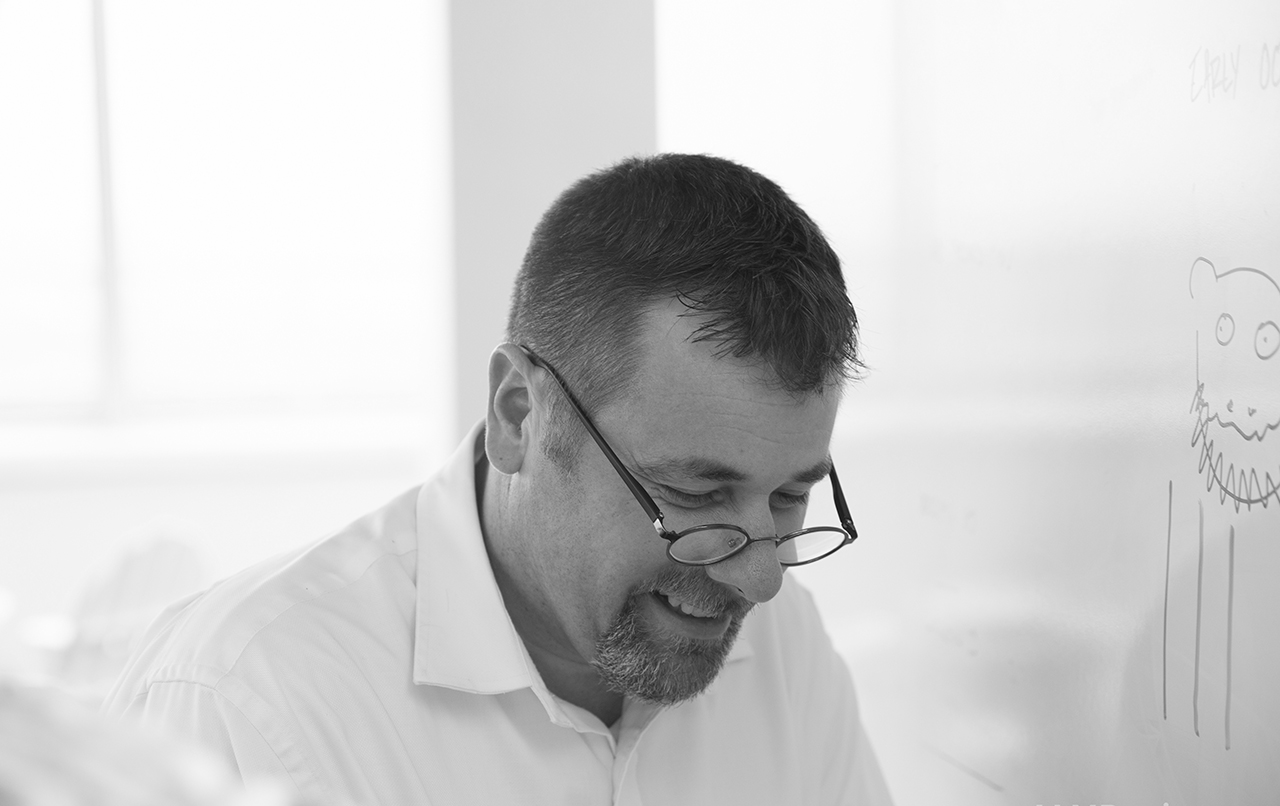
4. What benefits come from your idea of the post pandemic office?
Dorran: Efforts to remake the office or change course from office design trends will be costly (AKA new furniture or lost production when varying shifts miss lightbulb-chance opportunities) and potentially problematic to a workforce that wants to return to much of the preferred working methodologies. I would be remiss to say that hopefully this moment in time has allowed some amount of relaxation to the American fixation on 9-to-5 business, as I believe a malleable schedule provides workforce flexibility to deal with daily life needs (i.e. “picking up the kids” or taking a class), elbow room for independent people (who often prefer not being challenged by going into an office), or opportunity for other activities that refresh the mind, body, and soul.
The Department of Labor categorizes all businesses to 23 types and, of those, I guess-timate that approximately 15% – 18% of the entire labor force could reduce office dependency by percentages (this includes the entire 5% of self employed totals). Of the 10%-13% that remain, these would require at least 50%+ being in the office to allow office “join-ary” to effectively dovetail a workplace that equally shares responsibilities of workload and culture. Most will say it boils down to dollars and cents, but to me, I believe that saving money from the only slightly smaller footprints and not making rash changes to the office equals dollars and sense.
Leila: We’ve learned many things about ourselves and how we work over the past few months. Dorran, you are suggesting one idea that I think leads to a much bigger conversation and deserves more thought; specifically, this idea of the “relaxation of the American fixation on 9-to-5 business.” Slowly, over the past two decades, businesses have been offering a variety of employee incentives including flex work and additional family days. However, taking chances like unlimited vacations and working from home were thought to be too high of a risk that might implode the working business model. “It all sounds nice on paper but would take too much effort to try to figure it out.” Or, “if people worked at home they would be inefficient and would work slower.” And “we don’t have the technology to allow for remote working.” In our current experiment we’ve discovered, according to a June 2020 report by McKinsey, that 80% of employees polled enjoy working from home, 41% are more productive than they had been before, and 28% are as productive. Businesses are beginning to recognize that these variations in work models can be adopted longer term and not disrupt the business. I think when you talk about dollars and cents, it is more costly to continue with a business-as-usual mentality when the opportunity for long-term change has the potential to launch the business to a whole new level.
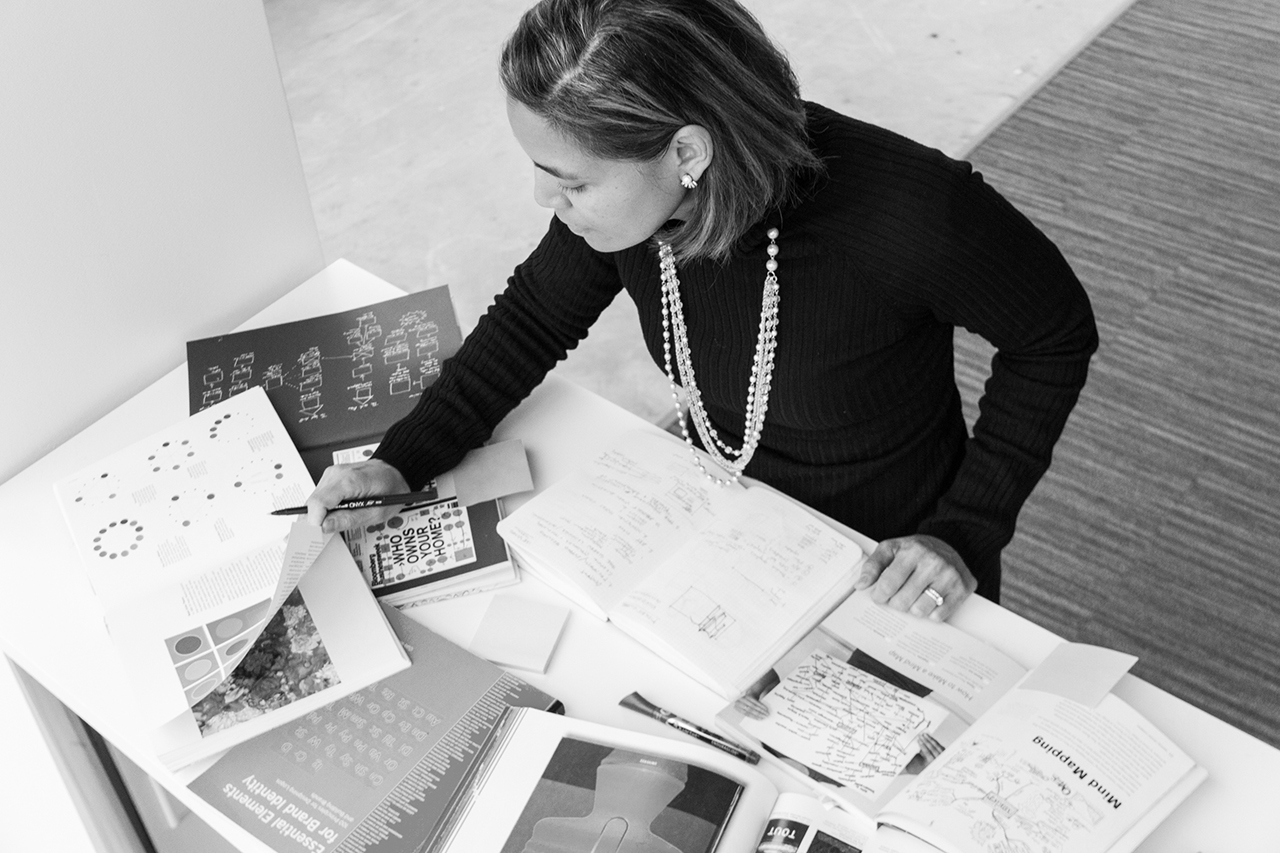
5. Describe your idea of the future office space. What’s it look like?
Leila: I see a future office space that is a network of many different spaces including the main HQ, regional touch points, resource centers or co-working, and home spaces. Yes, I said co-working space—I don’t think these will go to the wayside, but rather, be repurposed. Imagine the office space serving as the mothership with training, on-boarding, and demo rooms. Smaller rooms can function as visiting desks when an employee wants to come into the office to work. This space, the physical manifestation of the brand, still operates and resonates as the homebase for employees, but does not dictate that everyone works from this office every day. The talent pool and accessibility to a more diverse workforce is wider as the physical ties to the office space is not an obstacle.
More integration of the outside coming in using natural sunlight, fresh air, and greenery will promote an environment of cleanliness and open space. Collaboration and social internal activities thrive in these environments. The portable “office in a bag” to help outfit employees working at home or in a remote location will replace money spent on individual offices or cubicles. We’ve already seen some businesses giving employees headphones, webcams, and monitors. A stipend to purchase an office chair or desk can also help to improve those remote working environments for the individual employee’s situation.
Dorran: I believe future workplaces that are reactionary to this post pandemic world are not driven by a need to rework offices for safety’s sake (though office plans should always be drawn up to react to outside threats – much like corporations do for cyber terrorism), but driven to attract and retain both team players as well as independent talents (that tasted working from home and may welcome the option of becoming competition rather than remaining a teammate). It may be exciting to farm talent in remote locations without real estate shackles, but making Tom Brady your goalie doesn’t automatically cultivate your team to be odds-on favorite to win the World Cup of football (though it certainly does increase your odds if you’re playing in the Superbowl).
Future offices need to integrate brand with experience in flexible-usable space to help foster strong team bonds and goals to graft an individual’s desire to learn and find purpose – that statistically has major beneficial returns to corporations (i.e. health programs that result in less sick time and greater focus levels). The three goals would be to: Make employees and visitors excited to be in space that connects to what they do or produce, Create ebb and flow functionality but add something unusual as a spark (for internal engagement and external conversations), and Design space (and use furniture solutions) so that managers and executives have more accessibility for mentoring and encouragement rather than being stand-offish to the next generation.
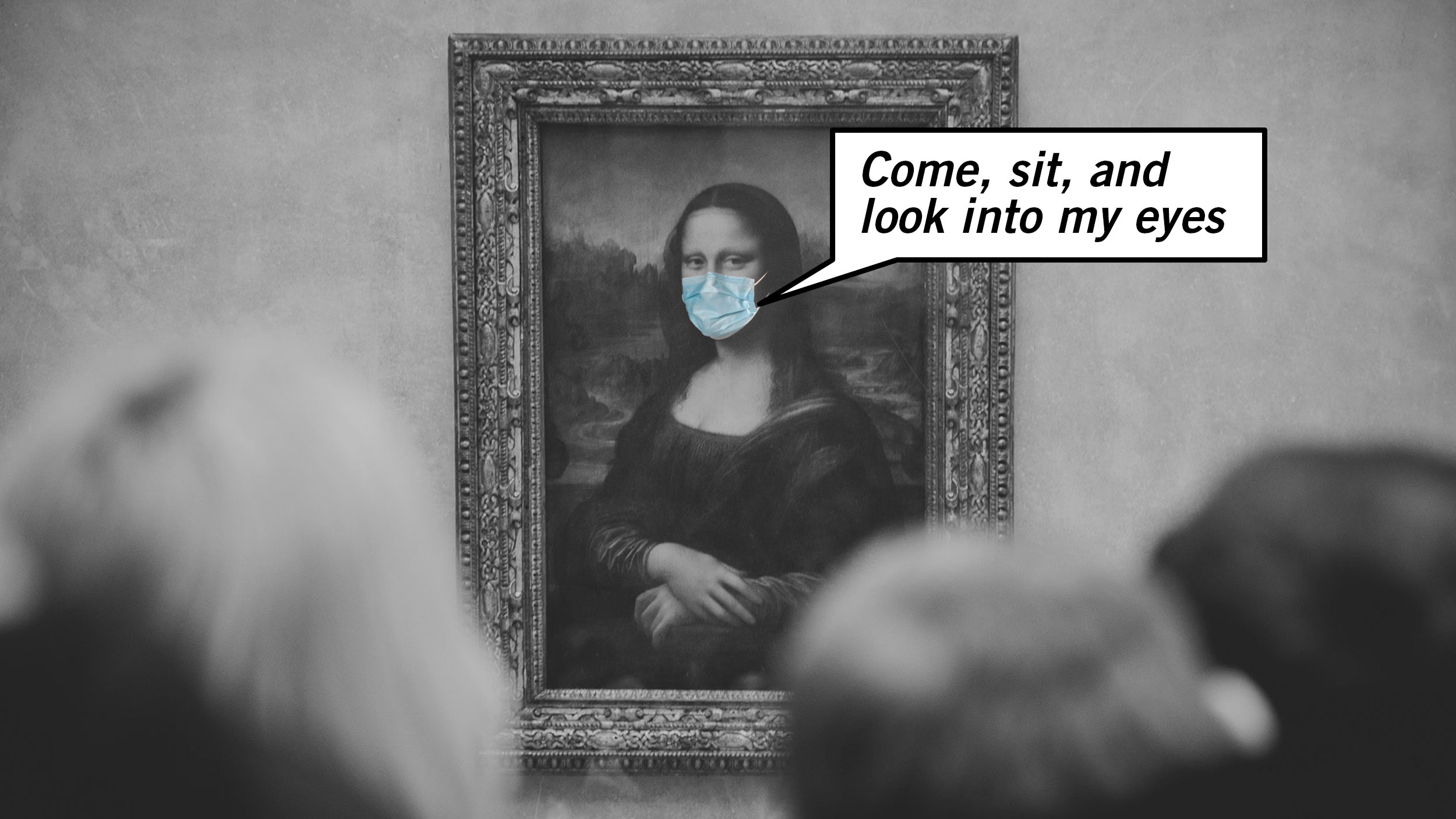
6. Final thoughts? Last words?
Dorran: My idea of reimagining the workplace is not so much about turning the office upside down (as our lives and livelihoods have been turned upside down by the virus) but rather to be steady at the wheel in the face of adversity to provide a safe harbor that inspires people to be engaged in what they do. Equally important is that the space attracts attention to itself like a painting causes admirers to return to see it again and again, as it beckons outsiders to experience it for the first time.
The best example that I can provide would be that of the Mona Lisa. We recognize the image of the woman set in a strange landscape background whose mysterious gaze follows us around the room. The image is so familiar that it comforts yet still inspires us. Small in comparison to most of the other art in the most famous museum in the world, it is the one piece that constantly attracts the most attention (often so much that it is almost worth avoiding), for no reason but that we are drawn to experience the woman who silently calls to all of us.
Leila: Oh, Dorran… I definitely want to turn the workplace, business structure and the office upside down. (This is why I love LLM Design, for friendly debates just like this.) The Mona Lisa? I’m singing The Beatles “Revolution.” It’s time to rethink how business is done. Let’s move away from the industrial approach of machines driving operations. Focus on the human first and build operations and structure around what makes us have purpose and success. This means understanding that not one size fits all, all of the time. Designing an adaptable operations and facilities structure will create a more equitable solution for your workforce.
Every workplace is a community. The initial commonality is of course that we all work at the same place. But we find other commonalities in our interests and ideas, just as we do our differences. The differences help to extend our own ideas and create empathy for the other. Building toward this type of community creates a dynamic, sustainable, and resilient business.
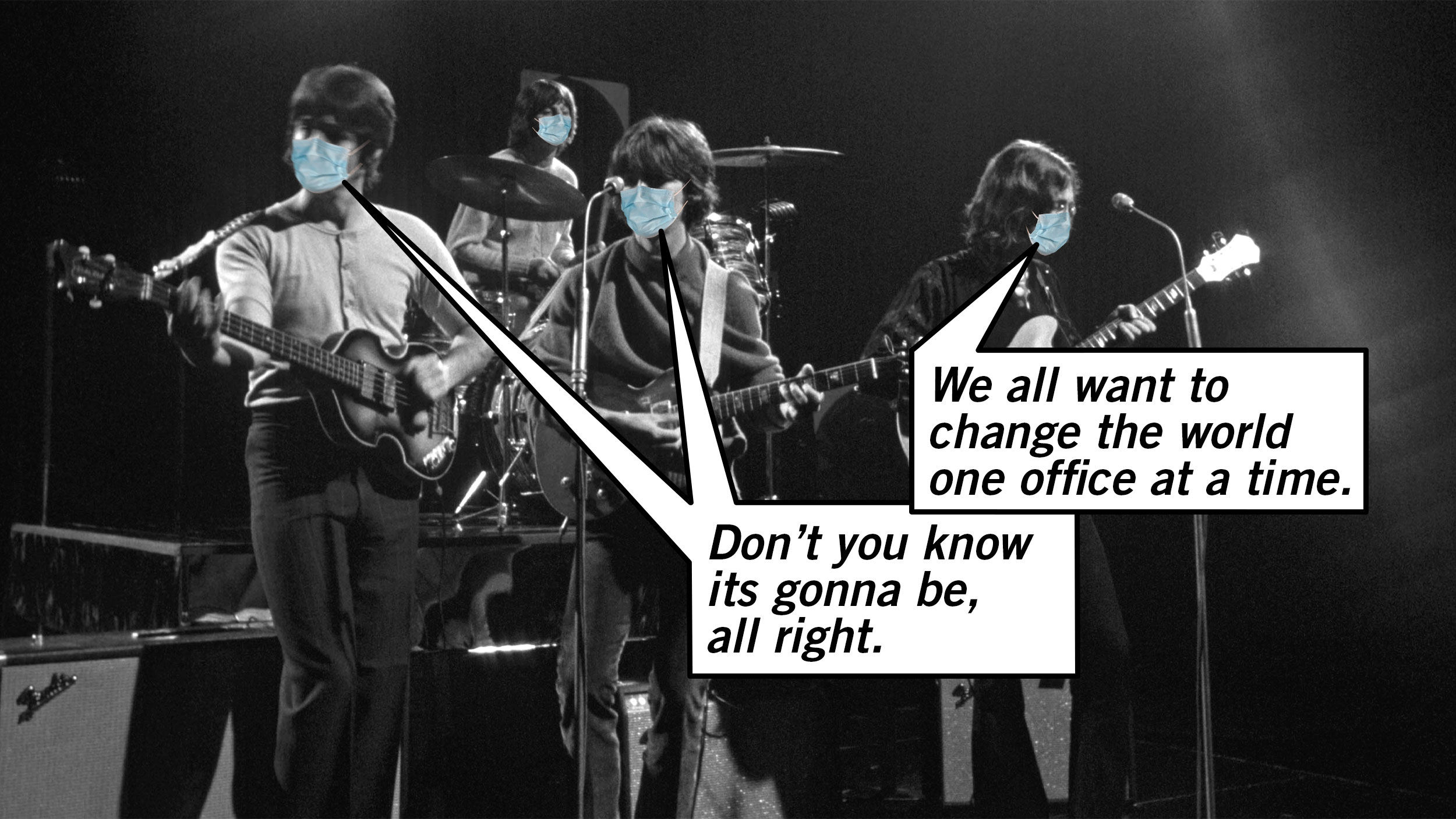
Please give us a shout if you need help reimagining your workplace for a post pandemic world. We’ve clearly been thinking about it a lot and would love to learn more about your business and what will take it to the next level.
